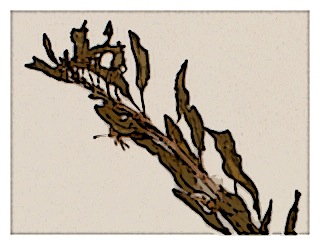
The Genus Fuchsia
Section Kierschlegeria
(one species)
This section was named in honor of Frédéric R. Kirschleger,(1804-1869), a French-Alsatian physician and botanist, who was a professor of botany at the school of pharmacy in Strasbourg. He also founded the Société d'Horticulture du Bas-Rhin (1845), and established the Société philomathique vogésorhénane (1862). Among his notable achievements is the Flore d’Alsace et des contrées limitrophes, a highly regarded publication on the flora of Alsace and neighboring regions, which was released in three volumes from 1852 to 1862.
Name: Fuchsia sect. Kierschlegeria.
Typus: F. lycioides Kunth.
Section Kierschlegeria
(one species)
This section was named in honor of Frédéric R. Kirschleger,(1804-1869), a French-Alsatian physician and botanist, who was a professor of botany at the school of pharmacy in Strasbourg. He also founded the Société d'Horticulture du Bas-Rhin (1845), and established the Société philomathique vogésorhénane (1862). Among his notable achievements is the Flore d’Alsace et des contrées limitrophes, a highly regarded publication on the flora of Alsace and neighboring regions, which was released in three volumes from 1852 to 1862.
Name: Fuchsia sect. Kierschlegeria.
Typus: F. lycioides Kunth.
F. lycioides Kunth
Central Coastal Chile. This section’s single inhabitant is a tetraploid (n = 22) xerophyte restricted to a narrow coastal belt in the Mediterranean-climate zone of central Chile (Atsatt & Rundel 1982; Berry 1989).
Central Coastal Chile. This section’s single inhabitant is a tetraploid (n = 22) xerophyte restricted to a narrow coastal belt in the Mediterranean-climate zone of central Chile (Atsatt & Rundel 1982; Berry 1989).

Habit—Shrub.
Leaves—Alternate, small, deciduous, bases spinose.
Flowers—Axillary, solitary, divergent, floral tube 3 to 10 mm long, nectaries lobed, band-type, sepals reflexed, pink or pale purple, petals pink or pale purple, stamens in two unequal series, pollen yellow, tri-aperturate, viscin threads smooth, stigma quadrilobed.
Fruit—Berries.
Seeds—14 to 30 per berry.


Authors—Andrews 1800 & 1807. Atsatt & Rundel 1982. Berry 1989.
Original publication—Nov. Gen. Sp. 6: 106 1823.
Synonyms—F. rosea, Ruiz & Pavon 1802; F. parviflora, Lindley 1827; F. spinosa, Presl 1835; F. rosea var. spinosa, Reiche 1898.
Herbarium Specimens—Arizona State 1, Arizona State 2, Arizona State 3, Arizona State 4; Berlin; Smithsonian.